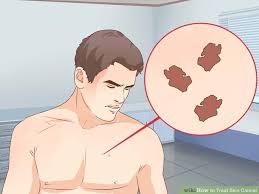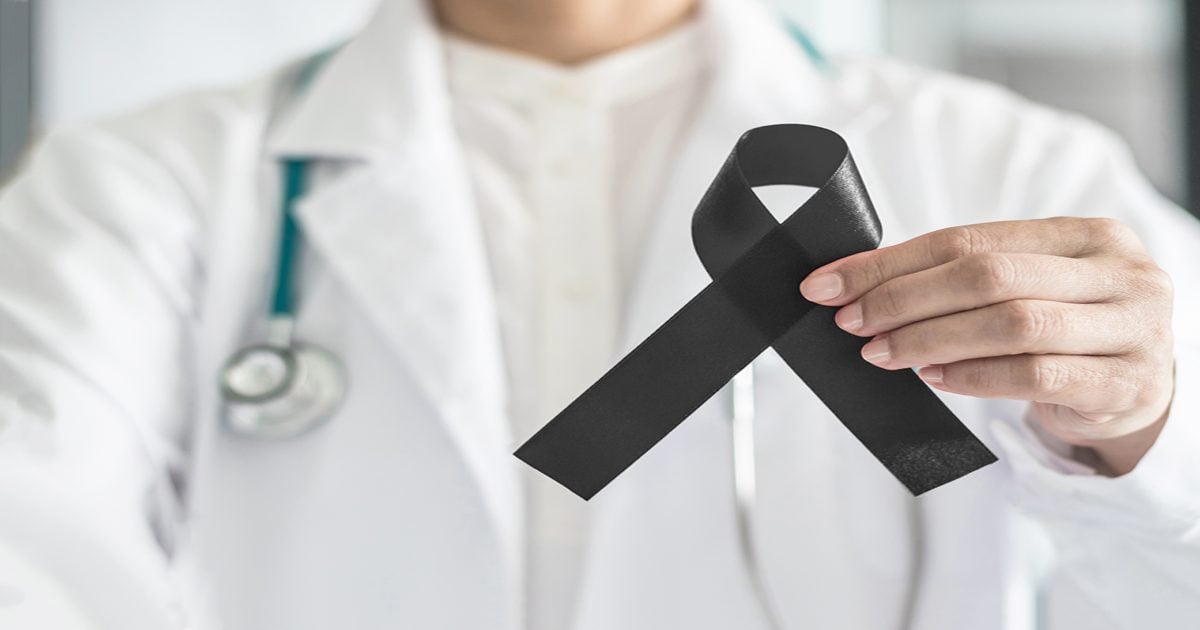9/11-Related Non-Melanoma Skin Cancer
 Skin cancer (non-melanoma) is the most common cancers suffered by responders and survivors (residents, workers, students, and others) who were present in lower Manhattan on 9/11 or during the many months after.
Skin cancer (non-melanoma) is the most common cancers suffered by responders and survivors (residents, workers, students, and others) who were present in lower Manhattan on 9/11 or during the many months after.
In the years following the terrorist attacks on September 11, 2001, many first responders, cleanup crews, and individuals who lived, worked, or attended school in lower Manhattan on or in the year after the attacks occurred have been diagnosed with non-melanoma skin cancer.
In fact, if you have been diagnosed with non-melanoma or any other type of skin cancer and you were south of Canal Street on 9/11 or any time up until May 30, 2002, you can pursue a claim for free medical treatment PLUS compensation from the 9/11 Victim Compensation Fund. Read on for more information about the strong link between 9/11 exposure and skin cancer, along with the assistance these federal programs provide.
About Non-Melanoma Skin Cancer
Skin cancer is the most commonly diagnosed type of cancer in the world. One in five individuals will develop skin cancer at some point in their lives before 70 years old.
This cancer most commonly forms on skin regularly exposed to the sun, such as the face, neck, arms, and legs. However, skin cancer can also form in areas that never see the sun, such as underneath the toenails or fingernails, or on the genitalia. Three main types of cancer can affect the skin, of which melanoma is one.
The other two common types of skin cancer include:
- Basal cell carcinoma: Located just beneath the skin’s squamous cells, basal cells produce new skin cells. This type of cancer presents with symptoms such as a pearly or waxy lump in the skin; a flat, flesh-colored or brown scar-like lesion; or a bleeding or scabbing sore that heals and then returns. This is the most common form of skin cancer, with an estimated 4.3 million cases diagnosed in the U.S. each year.
- Squamous cell carcinoma: Squamous cells lie just below the outer surface of the skin and function as a lining for the skin. This type of cancer presents on the skin as a firm, red nodule or a flat lesion with a crusty surface. Squamous cell carcinoma is the second-most commonly diagnosed form of skin cancer, accounting for around 1 million cases each year. Around 15,000 people die from squamous cell carcinoma in the U.S. each year, more than twice the amount who die from melanoma.
Several lesser-known skins cancer include:
- Kaposi sarcoma, a rare form of cancer that develops in the skin’s blood vessels. This condition presents with red or purple patches on the skin or in the mucous membranes and often occurs in individuals who have compromised immune systems, like AIDS patients.
- Merkel cell carcinoma: This type of cancer causes firm, shiny nodules to appear just beneath the skin and in the hair follicles, and most often occurs on the head, neck, and trunk.
- Sebaceous gland carcinoma: This is an uncommon and particularly aggressive type of cancer that originates in the skin’s oil glands. This type of cancer generally forms hard, painless nodules on areas such as the eyelid and is commonly mistaken for other conditions of the eyelid.
The above skin cancers are known to be caused by the fallout for the 9/11 attacks. Potential skin cancer complications include a recurrence of the cancer, either to a localized region of the body, or the spread of the cancer to other body parts. Scarring and changes to skin pigmentation in the affected area are common among those suffering from or being treated for skin cancer. Additionally, there is some risk associated with any medical procedure, including a risk of infection at a surgical site or unintended consequences of chemotherapy, radiation, or other treatments commonly used for skin cancer.
How Skin Cancer Is Diagnosed
A doctor generally diagnoses skin cancer after discovering a lesion on the skin during a visual examination. Often, the diagnosis involves taking a sample of the affected tissue through a biopsy. This tissue sample is then examined under a microscope to detect abnormal cells. Many types of skin cancer grow slowly and doctors can remove them during the biopsy. However, some types of skin cancer will require more extensive treatment.
Skin Cancer Treatments
The treatments for skin cancer depend on the type of cancer you have and the stage of cancer. A cancer’s stage is listed in Roman numerals between I and IV to indicate whether the cancer is contained to a localized area or if it has spread to other organs either in the same region of the body or in distant regions.
Common skin cancer treatments include:
- Radiation therapy: Radiation therapy uses high-powered energy beams to kill cancer cells. This treatment tries to kill off any remaining cancer cells that the surgery didn’t remove.
- Chemotherapy: This treatment requires the use of powerful drugs to kill cancer cells. If the cancer cells are limited to the top layer of skin only, you might apply a topical cream. However, systemic chemotherapy may treat skin cancer that has spread to other parts of the body.
- Freezing the cancer cells with liquid nitrogen. This treatment is generally only effective in the early stages, before the cancer spreads. The affected skin tissue will slough off it begins to thaw.
- Surgery to remove the cancerous tissue and a thin margin of healthy tissue.
- Mohs surgery, a procedure to treat skin cancer that appears in prominent locations such as the nose. In this procedure, the doctor slowly removes the skin growth layer by layer until no more abnormal cells remain, keeping existing healthy skin intact and reducing the appearance of scarring.
- Curettage and electrodesiccation or cryotherapy: In this procedure, the physician scrapes away cancerous cells using a device with a circular blade known as a curet. An electric needle then destroys any remaining cancer cells and liquid nitrogen applied to the edges of the affected area to prevent the abnormal cells from growing.
- Photodynamic therapy: This treatment uses a laser and drugs to make the cancer cells sensitive to light.
- Biological therapy: This treatment uses drugs that bolster the body’s immune system so that it can fight the growth of cancer cells on its own.
What Federal 9/11 Assistance Program Can Help Pay for My Treatments?
After September 11, 2001, the emergency responders, survivors of the attack, and cleanup crews working in the area needed help from the government to deal with the extraordinary health concerns resulting from exposure to the toxic dust plume at Ground Zero, as well as the other terrorist attack sites at the Pentagon and in Shanksville, PA. The downton residents, workers, students, visitors and others also breathed the same toxic air as the responders and, in thousands of cases, have come down with the same 9/11 caused cancers, including skin cancer.
Congress created the VCF in 2001, but Congress did not fully authorize and fund the VCF and the WTC Health Program until it passed and then-President Barack Obama signed into law The Never Forget The Heroes: James Zadroga, Ray Pfeifer, and Luis Alvarez Permanent Authorization of the September 11th Victim Compensation Fund in early 2011.
In 2019, Congress reauthorized and funded the WTC Health Program and the September 11th Victim Compensation Fund (VCF) until October 2090.
Obtaining Health Care and Monitoring Through the WTC Health Program
The WTC Health Program provides medical treatment and monitoring of eligible 9/11-related medical conditions, such as non-melanoma skin cancer. A network of health care facilities across the U.S. provides this treatment and monitoring.
To obtain the service, individuals must apply to have their 9/11-related medical condition certified through the program. Those with certified medical conditions may file compensation claims through the VCF.
To apply for the program:
- Ensure that you are eligible to participate in the program. Participants must have been either a first responder to the World Trade Center on September 11, 2001, a member of a rescue, recovery, or cleanup crew from September 11, 2001, to May 30, 2002, or must have lived, worked, or attended school in lower Manhattan during the above-listed time. First responders at the Pentagon or Shanksville, PA, also qualify.
- Review the documentation that you will need to include with your application. You must prove your presence at one of the terrorist attack sites during a specific time. You will also need to document a 9/11-related medical condition (which includes breathing and digestive disorders plus over 70 different cancers, including skin cancer) for certification of that condition. Certification is not only part of the qualification process for the WTC Health Program but also for the VCF.
- Fill out the application, and submit it along with the required documentation online or by mail or fax.
Obtaining Compensation Through the VCF
Also authorized through the Zadroga Act and reauthorized in 2019 through 2090 is the September 11th Victim Compensation Fund, often referred to as the VCF. The VCF provides compensation for wage loss and quality-of-life impacts (pain and suffering) caused by 9/11-related illnesses such as non-melanoma and other skin cancers. Additionally, the program will provide benefits to individuals who have lost a family member from a 9/11-related illness.
To file a VCF claim:
- Have your 9/11-related medical condition certified by the WTC Health Program, if you have not already done so.
- Register with the VCF by your registration deadline. Registration and filing a claim are two different steps in the process. Registering reserves your right to file a claim anytime until October 2090, but does not obligate you to do so. Your registration deadline is different, depending on the circumstances of your case. If you were certified by the WTC Health Program before July 29, 2019, you must register to file a claim before July 29, 2021. If your loved one died of a WTC Health Program-certified condition before July 29, 2019, you must also register to file a wrongful death claim by July 29, 2021. If your condition became certified or your loved one died of a 9/11-related condition after July 29, 2019, you must register to file a claim within two years after the latest date listed on your WTC Health Program certification or within two years of your loved one’s date of death.
- File your claim and all supporting documentation before October 1, 2090.
How an Attorney Can Help
 In addition to helping you understand these programs, an attorney can also provide services such as:
In addition to helping you understand these programs, an attorney can also provide services such as:
- Assistance with collecting the documentation you need to submit with your application or claim.
- Guidance as to other federal benefit programs you may be eligible for, as well as information as to how your application or filing of a claim can impact benefits you are already receiving.
- Assistance in appealing a decision from the WTC Health Program or the VCF.
- Assistance collecting your VCF award.


